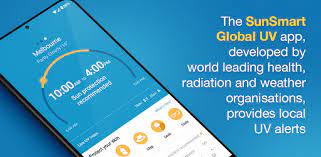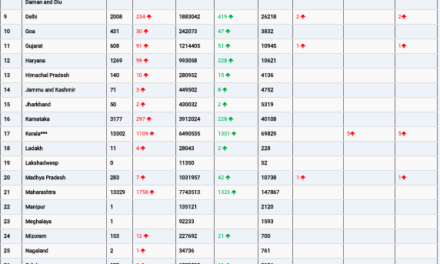“Evidence shows that overexposure to UV is the major cause of skin cancer. So it’s vital for people to know when and how to protect themselves,” said Dr Maria Neira, WHO Director, Department of Environment, Climate Change and Health. ”We encourage everyone to use the application to protect themselves and their children, and to make this a daily habit.”
Globally, it is estimated that over 1.5 million cases of skin cancer (melanoma and non-melanoma combined) were diagnosed globally in 2020. During the same period, more than 120,000 people across the world lost their lives to this highly preventable disease. One of the main factors contributing to these cancers is excess UV radiation from thinning of the earth’s stratospheric ozone layer resulting from the release of certain manmade chemicals. Under the international treaty known as the Montreal Protocol, all UN Member States are phasing out the production and consumption of those substances according to a specific timetable. As a result of these continuing efforts, the ozone level is projected to recover by mid-century. In the meantime, individuals need to be particularly cautious to protect themselves from receiving too much UV exposure – this is where the UV app plays an important awareness role.
“The Montreal Protocol protects the stratospheric ozone layer which, in turn, protects human health and the environment by blocking most of sun’s harmful ultraviolet radiation from reaching the earth’s surface. Skin cancer can result from overexposure to the sun, so it is imperative for everyone to remain vigilant and ensure they protect themselves adequately with hats and sunscreen. The SunSmart App is a fantastic UV monitoring tool, and I would encourage everyone to use it,” advises Ms. Meg Seki, Executive Secretary of UNEP’s Ozone Secretariat.
Everyone needs some sun, mainly for the production of vitamin D which helps to prevent the development of bone diseases such as rickets, osteomalacia and osteoporosis. But too much sun can be dangerous – and even deadly. The summer months hide real danger.
The UV App has been launched to coincide with the first day of summer in the northern hemisphere. By increasing the public’s awareness and helping to reduce the incidence of skin cancer, this application ultimately supports the achievement of UN Sustainable Development Goal 3, which aims to ensure healthy lives and well-being worldwide by 2030.
“This app combines meteorological, environmental and health expertise to help protect people from the sun both at work and in their leisure. It is unique because it uses data from country-level weather and UV measuring stations to provide accurate and location-specific UV Index readings,” said WMO Secretary-General Professor Petteri Tallas. “It is a great example of science serving society.”
Much of UV-related illness and death can be avoided through a set of simple prevention measures:
- Limit time in the midday sun
- Seek shade when UV rays are most intense
- Wear protective clothing, hats and sunglasses
- Use a broad-spectrum sunscreen of sun protection
Protecting children from extended periods in the sun is particularly important as excessive sun exposure during these early years can significantly increase the risk of UV related diseases later in life.
“This app is a useful tool to assist companies and workers in identifying hazardous work and planning safety and health measures. The International Labour Conference adopted on 10 June a Resolution recognizing a safe and healthy work environment as a new Fundamental Principle and Right at Work. It is a global call for increased efforts to prevent work-related injuries and diseases. Tools such as SunSmart Global UV are a small but useful contribution to this endeavour,” said Vera Paquete-Perdigão, Director of the ILO’s Governance and Tripartism, Department.
UV Index
The app is based on the UV Index, which describes the level of solar UV radiation at the earth’s surface. The UV Index is reported on a scale of 1 (or “Low”) to 11 and higher (or “Extreme”). The higher the index value, the greater the potential for damage to the skin and eye, and the less time it takes for harm to occur. The maximum UV Index is at the solar noon when the sun is highest in the sky. Adapting outdoor activities and using sun protection are recommended when the UV Index is 3 or above. UV damage is cumulative and UV can be harmful when people are exposed for long periods – even at low levels.
The app seeks to bring worldwide consistency to UV reporting and public health messaging. It was developed by the Cancer Council Victoria and the Australian Radiation Protection and Nuclear Safety Agency, both WHO Collaborating Centres in Australia where a similar app demonstrated improved UV protection public awareness when it was used to support a decades-long, systematic public health campaign promoting sun-smart behaviour.
The Global Solar UV Index was developed jointly by the World Health Organization (WHO), the World Meteorological Organization (WMO), the United Nations Environment Programme (UNEP), the International Commission on Non-Ionizing Radiation Protection (ICNIRP) and the German Federal Office for Radiation Protection (Bundesamt für Strahlenschutz, BfS) to inform and alert the general public of the potential health risk associated with high UV solar radiation levels.











